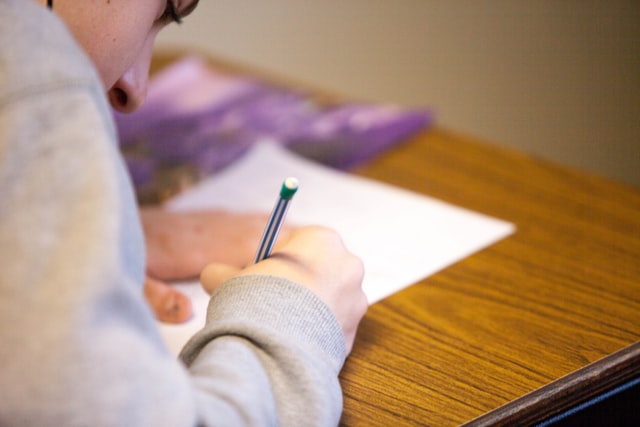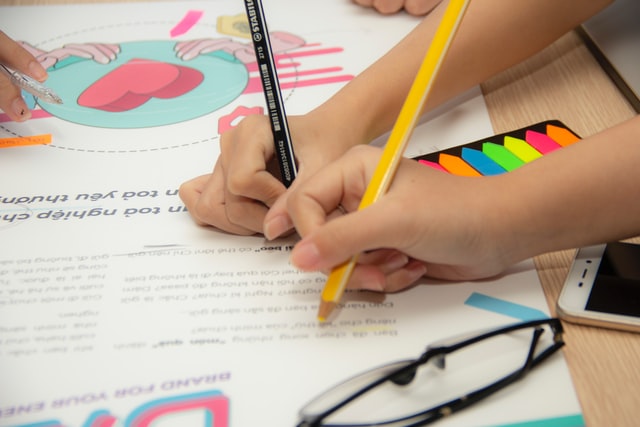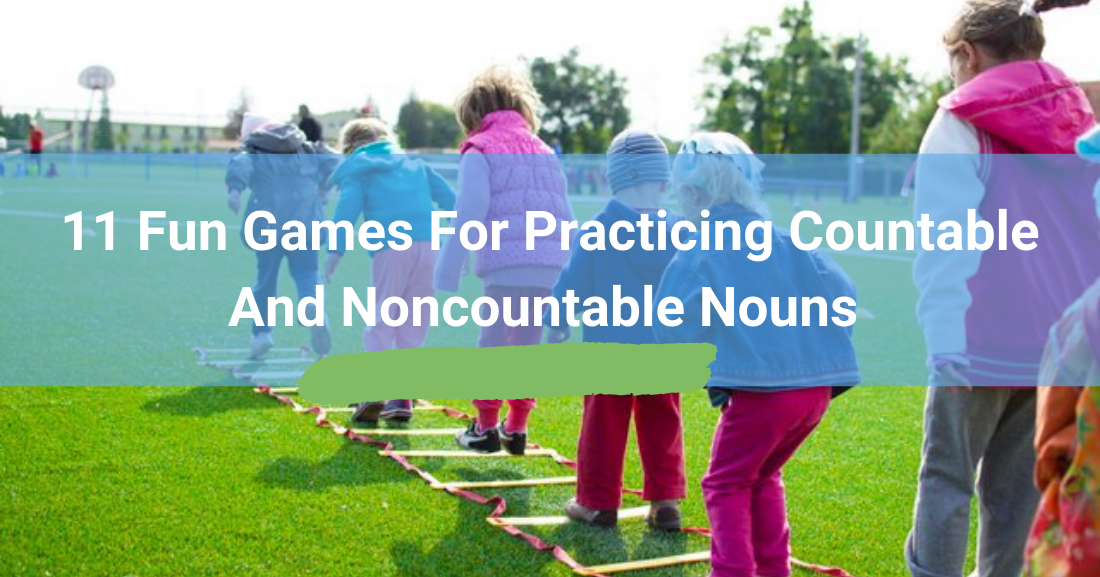If you are looking for some fun reviews of count and noncount nouns with your ESL students, try these simple games.
You can count on your students having a great time and learning, too.

11 Fun Games for Practicing Countable and Noncountable Nouns
-
1
Picture Perfect
Pictures are a great way to get your ESL students talking. Learners use visual input to access vocabulary and use grammar to express their ideas. This game focuses on the differences between count and noncount nouns in pictures. Put your students in pairs, and give each pair two pictures. The pictures should be very similar and should contain both count and noncount items. Each person gets one picture and cannot let their partner see it. Students must then ask each other questions about the objects in their partner’s picture to see what the differences between the two are. For example, one student might ask if there is any rice in the picture and the other student might answer there are three bowls of rice.
-
2
Pick a Quantifier
This is a simple game that you don’t need to do any prep for. Start by having your students brainstorm as many noncount nouns as they can along with the quantifiers that are used to count them. Then, write the quantifiers only on small slips of paper and put them in a hat. Erase the noncount nouns, and then give students turns drawing a quantifier from the hat and using it in a sentence with an appropriate noncount noun. Each noncount noun can only be used one time.

-
3
Noncount Bingo
How much do your students have in common? Help them find out with this version of Bingo. Start by giving each student a blank bingo board and having them fill in the twenty-four blank spaces with twelve noncount nouns and twelve count nouns. Once the boards are finished, start the game. Students will have to find someone in their class that has something in common with them in regards to a noun on their board. For example, two students might find they both drank a glass of milk for breakfast or that they are both great at grammar. When students find a match, they should write a sentence in their square such as, “Carlos and I both had a glass of milk for breakfast.” Play until one student has filled five squares in a row and calls out Bingo. Have that student share with the class the sentences that won her the game.
-
4
If it’s Too Hot in the Kitchen
This game takes some preparation, but it is fun and will elicit plenty of laughs. Start by preparing a series of instructions that might be part of a recipe. (Ten to fifteen steps is usually a good number, or you could have one step for each member of your class.) For each step, leave a blank where the ingredient would go. (For example, add one cup of….. and fold in three ….. .) Make sure your sentences elicit both count and noncount nouns.
Give each member of your class a copy of the instructions, and have them fill in the first blank. Then have them fold over the top of the paper covering their answer and passing the paper to the next person. That person fills in the second blank, folds the paper over, and passes it on. Continue until all the blanks are filled. Then collect the papers and read the recipes to your class. Have them vote on whether each recipe would be something they would be willing to try and which was the best sounding recipe overall. -
5
Guess the Fill in the Blank
On your board, write five to ten sentences that elicit count and noncount nouns. It’s best if at least some of the sentences are opinions. (For example, drinking some …. is the best way to start the day.) Have each person write a list of words that they would use to complete the blanks. Tell them, however, to put their answers in random order on their paper. After the questions are answered, have students switch their paper with a partner. That person will then try to figure out which answers go in which blanks. Have students check with their partner to see how many answers they matched up correctly.

-
6
Paradise Bound
What would a person need if they were stranded on a desert island? This fun game will give your students a chance to discuss it. Put your class into groups of about four or five. Tell your class that each group must decide on what items they will need to survive on their island. They can only bring ten items (though they can choose the quantity of the item that they want) and at least four of those items must be noncount nouns. Have the group discuss it and then present their final list to the class after everyone is finished.
-
7
What Is Your True Age?
In this game, students will answer questions to see how healthy their lifestyle is. Start by preparing a list of questions (using both count and noncount nouns) about their lifestyle like:
• Foods they eat
• Activities they do
• Personality traits (and so on)
You can also have students make their own lists based on what they think makes a healthy lifestyle. Make sure your questions include both count and noncount nouns. For each healthy answer, students should subtract one year from their age. For each unhealthy answer, students should add one year to their age. After answering all the questions, have students share their modified age with the class. -
8
The Worst Case Scenario Game
If you have seen The Worst Case Scenario Handbook, you have seen the strange situations that people might get themselves into. In this game, students choose a random page of the book by calling out a number and then turning to that page. They read the situation on that page but do not read how to survive it. Students then name three things (using both count and noncount nouns) that would help them survive that situation. If you like, play this game as an entire class or in groups of four or five. After each person gives their answer, have students read how to survive the situation and see if the player mentioned any items that are actually listed in the survival guide.

-
9
A Roll of the Dice
This simple game requires no preparation on your part other than having dice handy. Put students in pairs, and give each pair one standard six-sided die. Student’s take turn rolling the die. If they roll a one, two, or three, they make a statement about something in your classroom that has that quantity. If they roll a four, five, or six, they make a statement about your classroom using a noncount noun and its appropriate quantifier. If a player can give his answer in less than ten seconds after he rolls, he scores a point. If he cannot, he doesn’t score anything for that round. The first player to ten points wins.
-
q
What’s the Catch?
Start this activity by making two sets of cards. One set should be several places that a person might go – a restaurant, college, a new home, a classroom, etc. The second set of cards should list problems that location could have – there is no bathroom, it smells like onions all the time, etc. Put students in pairs to play. One person draws a location that they are going to. The other person draws the problem that location has. The person with the location asks his partner yes/no questions using count and noncount nouns until he figures out what the problem is at his location.
-
w
Time to Redecorate
How much do your students like your classroom? What would their ideal classroom look like? Have your students imagine what they would do to your classroom to make it perfect, and then have each person present their ideas to the class. Students should draw a picture or make a diagram as well as list the changes they would make to the classroom. Have each person present their ideas to the class in no more than five minutes. Then have the class vote on whose classroom they think is the best version.
What are your favorite games for practicing count and noncount nouns?
P.S. If you enjoyed this article, please help spread it by clicking one of those sharing buttons below. And if you are interested in more, you should follow our Facebook page where we share more about creative, non-boring ways to teach English.







